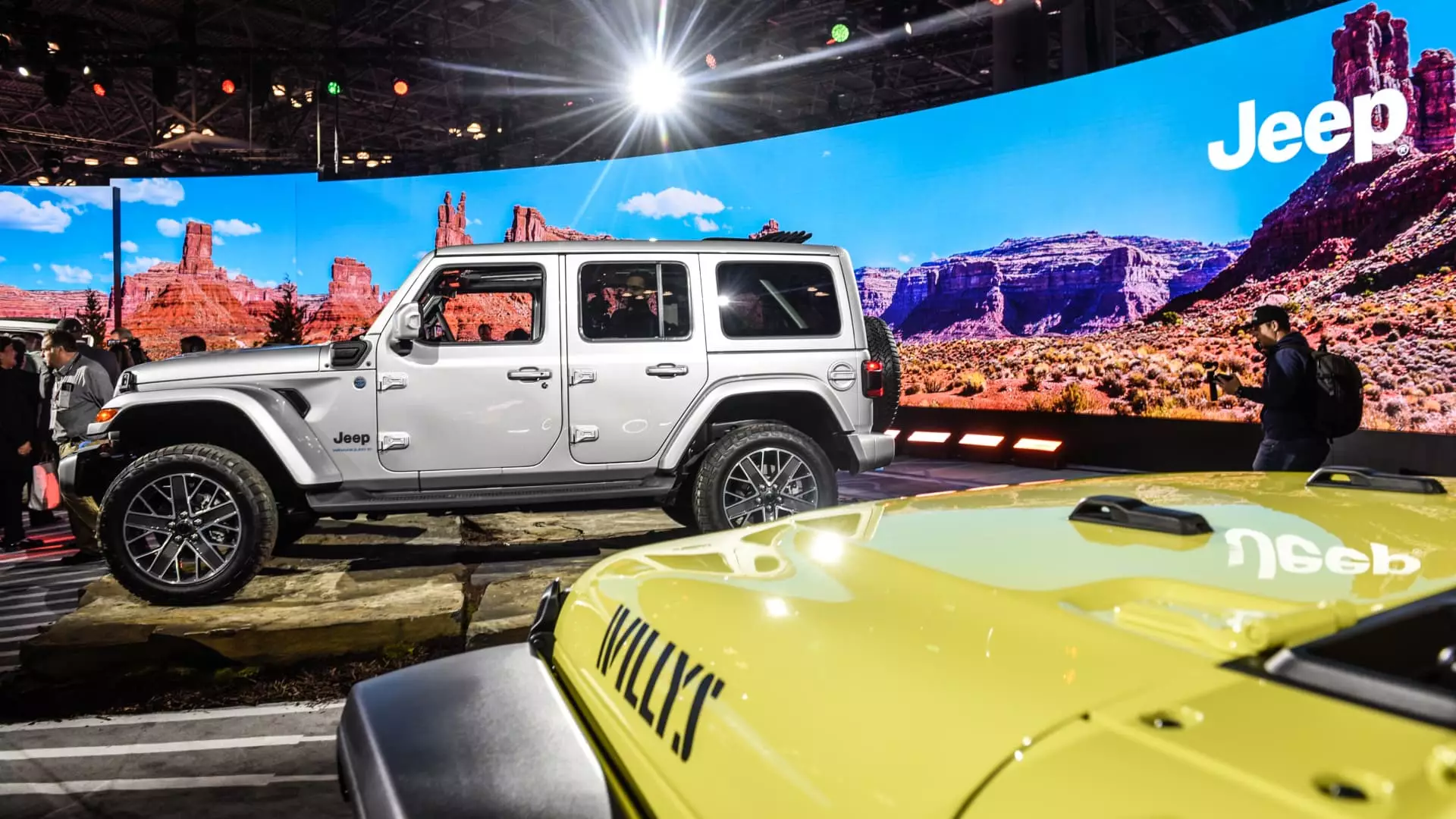In a bold move towards the future of the automotive industry, Jeep has announced plans to significantly increase sales of its plug-in hybrid electric vehicles (PHEVs) in the U.S. market. The goal is to grow sales by up to 50% this year, with a target of selling between 160,000 to 170,000 units. This strategic decision comes as the brand transitions from its traditional gas-guzzling SUVs to all-electric vehicles, aiming to bridge the gap between the two technologies in light of slower-than-expected sales of EVs.
By focusing on PHEVs, which combine both internal combustion engines and EV technologies, Jeep hopes to accelerate consumer adoption of electrified vehicles. The brand believes that this transitional approach could serve as a stepping stone towards fully electric models. The projected sales figures for PHEVs this year are not only impressive but also indicative of a strategic move by Jeep to capture a significant share of the market.
Jeep’s emphasis on PHEVs has proven successful, with the brand leading the pack in PHEV sales in the U.S. market. Last year, the brand sold a total of 113,113 PHEV units, including popular models like the Wrangler and Grand Cherokee. The brand’s commitment to offering a diverse range of electrified vehicles has resonated well with consumers, as evidenced by a 47% increase in sales during the first quarter of this year compared to the same period last year.
Looking ahead, Jeep is set to expand its EV portfolio with the upcoming launches of all-electric SUVs like the Wagoneer S EV and the Wrangler-like EV called the Recon. These new additions to the lineup are expected to further solidify Jeep’s presence in the electrified vehicle segment. Additionally, the brand has plans to introduce new plug-in “range-extender” models to its gas-powered SUVs in 2025, showcasing a commitment to innovation and sustainability.
Both traditional hybrids and plug-in hybrids play a crucial role in Jeep’s electrified vehicle strategy. While traditional hybrids like the Toyota Prius offer improved fuel economy through electrified components, plug-in hybrids feature a larger battery that allows for extended all-electric driving. Jeep’s focus on offering a diverse mix of EV, PHEV, and internal combustion engine vehicles demonstrates a comprehensive approach to catering to varying consumer preferences.
Exploring Future Opportunities
Jeep’s foray into the electrified vehicle market extends beyond just PHEVs, with plans to potentially introduce traditional hybrid vehicles in the U.S. market. The brand’s strategic roadmap includes a mix of EVs, PHEVs, and traditional internal combustion engine vehicles, reflecting an adaptive approach to evolving market trends. By continuously evaluating consumer preferences and market dynamics, Jeep aims to stay at the forefront of innovation in the automotive industry.
In addition to PHEVs, Jeep is gearing up to launch “range-extender electric vehicle” models (REEVs), which operate differently than traditional hybrids. These vehicles can function as zero-emission EVs until the battery is depleted, at which point an onboard generator powered by an internal combustion engine takes over. The upcoming Ram Ramcharger full-size pickup truck is expected to be the first REEV vehicle from Stellantis, offering consumers a unique and efficient driving experience.
As Jeep continues to expand its electrified vehicle portfolio, the brand is strategically positioning itself to meet evolving consumer demands and regulatory standards. By offering a diverse range of EV, PHEV, and REEV models, Jeep aims to capture a significant share of the growing electrified vehicle market. With a clear focus on innovation and sustainability, Jeep is paving the way for a greener and more efficient future in the automotive industry.

